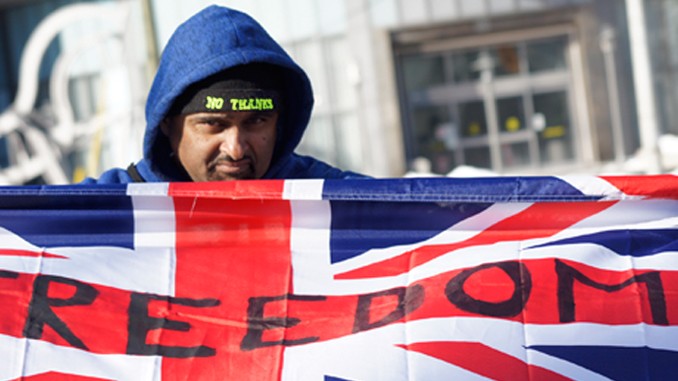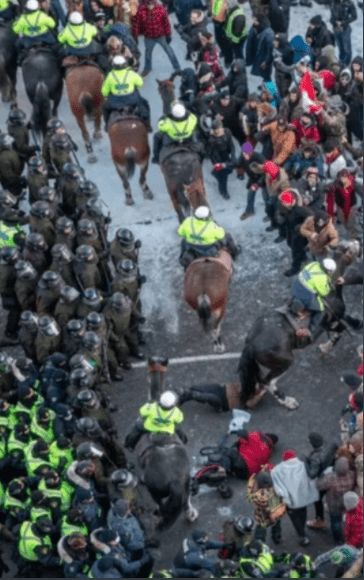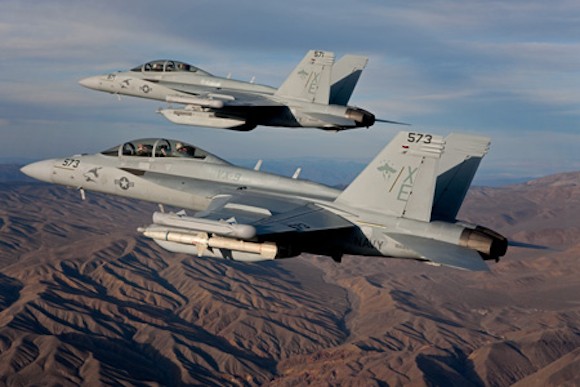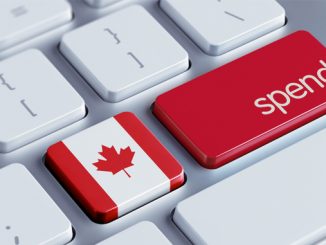
Latest news: Two days after the approval of the Emergency Act by the House of Commons, on February 23, Prime Minister Trudeau called off the martial law, claiming that the threat no longer existed.
The whole world watched Canada’s Freedom Convoy travel thousands of kilometers from the Pacific and Atlantic shores to reach Canada’s capital in protest of the draconian measures supposedly justified by the dangers of the pandemic. The convoy was greeted enthusiastically throughout its journey; the inhabitants of the provinces that were passed by were lining the roads to welcome with flags the tens-of-kilometers-long convoy. In the biting cold, people waited for hours to greet those passing by, reassuring them that they were on a mission representing a large portion of freedom-loving Canadians. It quickly turned out that the desire to regain civil rights and freedoms guaranteed by the Charter of Rights and Freedoms was the main inspiration of the protesters.
The convoy arrived in Ottawa on January 28, starting the three-week festival of freedom, which was clearly reminiscent of the birth of Solidarity in Poland. The main premise of the convoy was the peaceful nature of the protest. This was rigorously followed and was not disrupted by the few attempts at provocation to discredit the participants.
Hundreds of giant trucks and other vehicles lined up around the Parliament of Canada, surrounded by all infrastructure necessary to survive in such harsh conditions. The leaders of the perfectly organized protest were determined to wait in Ottawa as long as necessary to achieve their goals. It quickly turned out, however, that the Liberal minority government, led by Prime Minister Justin Trudeau, did not intend to engage in any talks and negotiations with the thousands-strong mass of protesters, aided by the thousands of Canadians who came to Ottawa for a day or a few days to support the convoy’s demands.
Everyone unanimously emphasized that they had never been in a crowd so strongly united and filled with such joy and enthusiasm. “I have never experienced as much love as here in the protest” was the most often repeated reflection of the participants and well-wishers.
The group of leaders was very large and consisted of people of great intellect and competence, qualifying them to conduct talks at the highest level. There were also scientists and doctors, ready to discuss vaccine effectiveness, side effects, and the lack of scientific grounds for drastic restrictions and compulsory immunization. The protesters were also supported by a large group of veterans and former policemen. Among them was even Daniel Bulford, a former RCMP officer and sniper who belonged to Prime Minister Trudeau’s security detachment.
Trudeau himself disappeared from Ottawa on the pretext of positive Covid test results; after his return, he appeared briefly at some parliamentary meetings, not answering any questions and endlessly repeating vague banalities and propagandistic slogans. This happened despite the harsh criticism from the opposition Conservative Party, which, after a period of stagnation under the inept and wavering Erin O’Toole, chose Candice Bergen, a brave and uncompromising MP who kept ruthlessly exposing the incompetence and bad will of the incumbent Prime Minister.
However, the attempts to save the situation and the demands that the government, following in the footsteps of many world countries, submit a plan to end pandemic restrictions, have had no effect.
Justin Trudeau announced that he intended to enact the Emergency Act – the equivalent of martial law – to end the protests without negotiating. This was to be discussed in an extraordinary parliamentary session on Saturday, February 19. The meeting did not take place because the operation of the parliament was suspended and, despite the lack of approval of the state of emergency by the parliament and the senate, without any legal grounds, the pacification of the protest area began. It started with the illegal freezing of the bank accounts of those involved and supporting the protest, and then the arrests of the convoy’s organizers.
Wow, this is exactly what the Hong Kong Police Force looked like – except Trudeau gave them bonus baseball bats. pic.twitter.com/HzjxqhCarL
— Keean Bexte (@TheRealKeean) February 19, 2022
Special police units, armed with all available weapons to brutally pacify protests, units of mounted police, and pieces of equipment reminding one of the methods of the most ruthless regimes, were introduced into the action. Drivers of the trucks parked around the parliament and downtown Ottawa were arrested, individuals were pulled out from the crowd of protesters, and violence, truncheons, tear gas and rubber bullets were used. A drastic example of the brutality of the regime’s forces was the charge of the mounted police into the crowd. As a result, two people were trampled, including a disabled woman who survived but had to be hospitalized; journalists from the True North and Rebel Media were beaten and sprayed with tear gas.
TRUDEAU'S MOUNTED STORMTROOPERS TRAMPLE ELDERLY LADY.
Trudeau must be stopped. This is not Canada. pic.twitter.com/3YWsIqegkv— Keean Bexte (@TheRealKeean) February 18, 2022
Masses of people still gather in Ottawa, in sympathy with the convoy participants, who have been surrounded so tightly that the media and assembled citizens and journalists do not have access to the scenes of arrests and brutality of Trudeau’s squads. Right in front of their menacing formations stands the crowd waiving Canadian flags and banners of many provinces and countries (there are also Polish flags of emigrants who came to Canada not only in search of prosperity, but also freedom, which seemed to be something obvious in a country considered to be a champion of democracy and tolerance.)
 Will Trudeau’s martial law, not yet officially approved by the Parliament, achieve the goal of pacifying the society and completely enslaving the descendants of pioneers who set off overseas with high hopes and a thirst for freedom which still burns in the hearts of many Canadians? It seems that the totalitarian methods and brutality, only too familiar from the worst communist and fascist regimes, could backfire and awaken much of the Canadian society, accustomed to the freedom served on the plate of prosperity. Canadians have finally realized that they must fight for freedom. While the troops of the liberal tyrant in Ottawa use truncheons against the freedom-craving citizens, many thousands of hopeful protests are taking place in other Canadian cities. The people of Canada and the rest of the world will have to decide which side of history they are on: among the charging police or the defenseless masses calling for freedom.
Will Trudeau’s martial law, not yet officially approved by the Parliament, achieve the goal of pacifying the society and completely enslaving the descendants of pioneers who set off overseas with high hopes and a thirst for freedom which still burns in the hearts of many Canadians? It seems that the totalitarian methods and brutality, only too familiar from the worst communist and fascist regimes, could backfire and awaken much of the Canadian society, accustomed to the freedom served on the plate of prosperity. Canadians have finally realized that they must fight for freedom. While the troops of the liberal tyrant in Ottawa use truncheons against the freedom-craving citizens, many thousands of hopeful protests are taking place in other Canadian cities. The people of Canada and the rest of the world will have to decide which side of history they are on: among the charging police or the defenseless masses calling for freedom.
Aleksander Rybczyński
translated from Polish by Mariusz Wesolowski




Song by Professor Jordan Peterson; Wake Up: Dedicated, under the current unfortunate conditions, to the Prime Minister of Canada, the Right Honorable Justin Trudeau.
https://youtu.be/P1po9pNs8RU